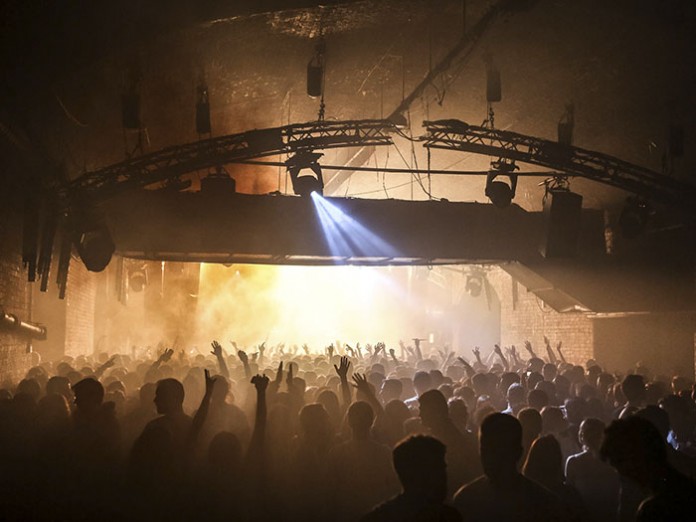Manchester-based dbn Lighting returned to the Store Street car park beneath the arches at Piccadilly station for the current Warehouse Project season, with a brand new lighting and visual design.
The venue layout was essentially the same as previous seasons, however the brief to dbn’s Project Manager Pete Robinson was to give it a new vibe with a fresh design.
The main room stage still had a video truss at the back, but forward of that, Robinson transformed the look and feel of the stage space by installing a 10 metre diameter half circle of trussing (open ends downstage), which fitted snugly into the width. It was also raked to harmonise it with the curvature of the arch. This replaced the previous year’s overhead trusses that were straight. Further segments of curved trussing were flown above the dancefloor.
While the section over the stage was effectively a semicircle, over the dancefloor were another four sections – in two pairs – to cover the full area, and again following the same lines of the over-stage truss, so the defining shape of the arches was echoed down the room.
Another two similar sections of curved truss were rigged in the bar area mimicking the spherical ambience of the main room and bringing the two spaces together, along with the lighting in the bar which also mimicked the dance floor to involve the whole room in the beat permeating the environment.
Robinson explained: “It’s quite an expedient space, so it’s important for crowd-flow to get people utilising all of it. This is an area where they can assist the process with a bit of intuitive lighting.”
The main moving lights are Clay Paky – a mix of 22 Alpha Spot 575 HPEs, eight Alpha Wash 300’s and eight Sharpys for the beam effects, which were joined by 16 active Showtec Sunstrips, eight Martin Professional Atomic 3000 strobes, four 4-Lite molefays and six ETC Source Four Juniors for key lighting. New for this event were 12 Ayrton Magic Dots rigged on the overstage truss.
Additional Sunstrips were added down the sides of the dancefloor on scaff bars, to echo the previous design and six Beamnet-10r Pro laser array units in red were installed by Andy Thomson from AC Laser.
Lighting control was an Avo Pearl Expert, which was run for the season by Colm Whaley and Edwin Croft.
The screen in the main room was made up from 84 panels of dbn’s proprietary Eastar 12mm LED configured as a single surface, with the bottom two rows detachable for fitting in front of the DJ riser. Content was supplied by a collective of VJs supplied through the venue, together with those brought in by visiting artists.
Behind the stage in Room 2 were three upright sections of trussing and rigged across these were an array of 18 Chauvet Nexus 4×4 panels, nine Sunstrips, four Atomic strobes, four CP Alpha Beam 300’s and two more Beamnet-10r Pro laser units, this time in blue.
Two further curved trusses across the room provided lighting positions above the dancefloor and further back still from the stage are two smaller pieces of curved truss facing one another to extend the vibe into the bar area. The dancefloor was lit with 12 Martin MAC 250 Entours and three Atomics. An Avolites Tiger Touch was in control, operated by Anthony Owen.
Scattered around the bar areas were hundreds of PAR 16 Birdies for bar lighting and LED PAR’s for general ambient illumination with four Altman Shakespeare ellipsoidals projecting the sponsor logos crisply around the venue.
The VIP area was illuminated with more birdies, LED PARs and some in-house 2 metre LED strips, and for Room 3, a sponsored area, dbn supplied LED PARs and a matrix of thirty decorative filament bulb lights in custom housings, laid out and wired so they could be individually mapped via Owen’s desk. Ramping up the atmospherics across the venue were four DF50 hazers and four ZR44 Smoke Machines.
Warehouse Project was operational two or three days each weekend from the start of the university term to New Year’s Day.
For dbn all the kit stayed in and rigged throughout the week, apart from the control and some drapes used for creating dressing rooms and backstage areas.
The same production team had worked together on the main WHP season for some years, so running the weekly production activities to create a nightclub from a car park, with get-ins and outs, etc. had been honed to a fine art.
“It’s a great privilege to have been involved with such an iconic northern brand over its ten year life,” concluded Robinson.






